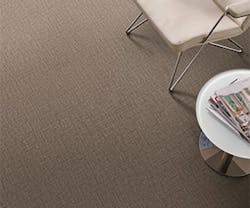Giving Building and Design Materials a Second Life
Renovation and design projects can create a lot of waste. Disposing of all those samples, extra materials or old materials can become an issue. While some samples and extra or old materials must be disposed of with care, many items are recyclable.
Besides keeping material out of landfills, benefits of recycling and donating products include:
-
Possible benefits in programs like LEED v4 projects and ENERGY STAR scoring
-
Money savings through decreased disposal costs
-
Energy savings for the Earth (e.g. reduce greenhouse gases, prevent pollution, etc.)
Students Connect With Industry Experts for Recyclable Items
If you don’t want to reuse products but hate to see them go into the landfill, there are many local, state and national programs and opportunities to recycle or reuse products.
BUILDINGS Podcast
Architectural Salvage: Benefits of Reusing Old Buildings
Empty, decaying buildings are an eyesore—but demolishing them means valuable, reusable materials take up space in a local landfill. Here’s another way >>
“By saving samples from the landfill, we are not only practicing resource conservation, we are providing materials to inspire people to design, create and value art,” says Amy Costello, sustainability manager for Armstrong Flooring, in a news release.
(Photo: Students select from donated samples at the Armstrong Flooring/IIDA Mid-America kick-off event in Kansas City, Mo. Credit: Armstrong Flooring)
The pilot program connects participating architectural and design firms—including HOK, Gould Evans and Hollis + Miller—with local design students at educational events. When a student attends an event, he or she can take the samples back to school for use in design projects.
Design Materials: Textiles, Finish Cards and Brochures
Save a Sample!: This program creates a second life for unused brochures, fabrics and finish cards, with materials delivered to local design schools. Over the years, thousands of pounds of materials have been donated by some of the busiest design firms in the U.S.
[Another sustainable initiative: Your Guide To Reusable Straws]
Material Bank: Material Bank allows you to request samples online and have them shipped to you. The organization accepts returns of samples, including those you have received elsewhere, to encourage reuse.
FABSCRAP: This organization was created as a way for businesses in New York to recycle fabric scraps. Any business that creates textile waste can request a recycling bag and schedule a pickup.
Recyclable items are used as part of other products or reused by students, teachers, designers or crafters.
Building Materials and Furnishings
The organization’s Habitat ReStore locations are home improvement stores that accept new or gently used items. Items are then sold in the store, and money raised by Habitat ReStore locations helps families build a home. They also have corporate partnership opportunities.
Building Materials Reuse Association
The organization works to advance the recovery, reuse and recycling of building materials through education. Along with the American Wood Council and Canadian Wood Council, the Building Materials Reuse Association manages Reuse Wood, a directory to find wood and wood products to be reused.
Giving materials and other people a second opportunity to the products helps extend resources of the Earth and in your pocketbook and program scores.
Two handpicked articles to read next:
About the Author

Valerie Dennis Craven
Content strategist and writer
Valerie Dennis Craven is an experienced writer of commercial and residential buildings and interiors, having previously served as Editorial Director for both BUILDINGS and i+s. Valerie enjoys writing about technology and how it impacts users in the built environment.
